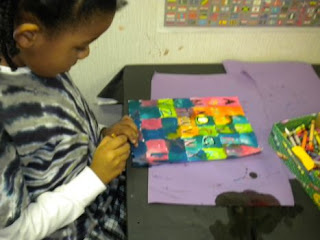Project objective(s):
-Learn about the work of Jasper Johns
-Use art material in a responsible manner
-Create interesting patterns
Using crayons and water colors to create a Jasper Johns alphabet composition
Learning how not to leave empty spaces on the paper
Learning how to create patterns with two colors
It takes hard work not to leave empty spaces on the target
The student is using color fencing for this particular art project
Pressing the pastels on the paper creates vibrant colors












































